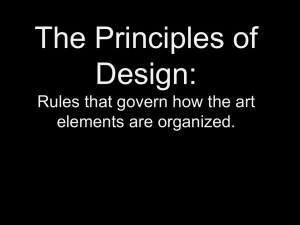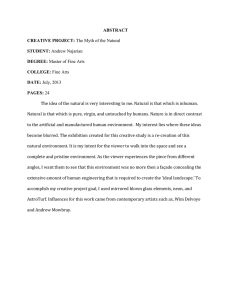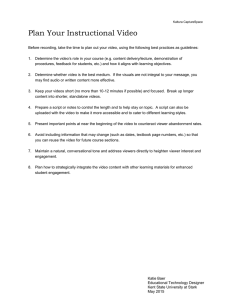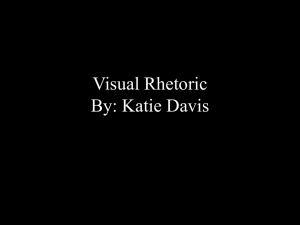CALIFORNIA STATE UNIVERSITY, NORTHRIDGE
advertisement
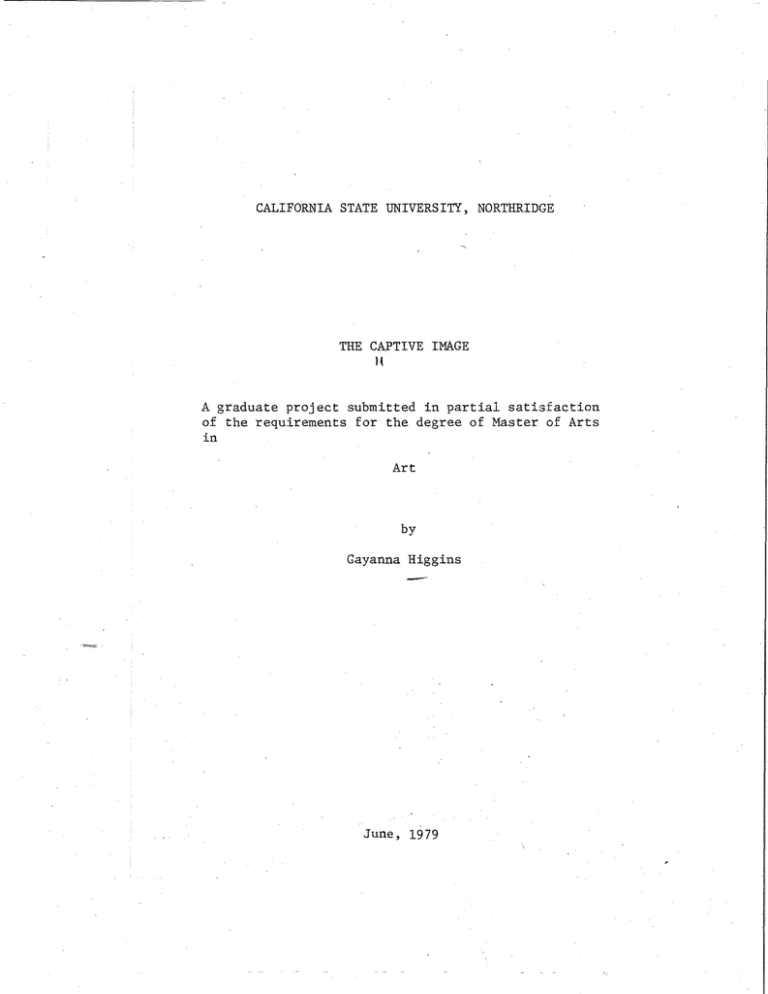
CALIFORNIA STATE UNIVERSITY, NORTHRIDGE THE CAPTIVE IMAGE H A graduate project submitted in partial satisfaction of the requirements for the degree of Master of Arts in Art by Gayanna Higgins June, 1979 The Abstract of Gayanna Higgins is approved: Tom Fricano, Advisor Kenon Breaz~e~ Advisor Robert von Sternberg, Chairman "-J~····-· California State University, Northridge May, 1979 ii ABSTRACT THE CAPTIVE IMAGE by Gayanna Higgins Master of Arts in Art My photographic images are staged events. They reflect an atti- tude that I have about different ways of seeing, of sensing a personal reality. I choose to see this reality in a series of visual images; images that evoke sensations and tactile responses. These images are created and composed through the viewfinder of my camera. Like characters in a play, I assemble the objects and the people that will act out this inner drama in my photographs. I have not intended to create a predictable visual reality in my photographs. I change what appears to be real, and to suggest that what I artificially create is true. This illusion is created by the abstracting of visual information and by the very nature of the photographic process itself. I concentrate on a direct line of vision. ~7hite, The use of black and the stark imagery enables me to isolate my vision from super- fluous distractions and to create a certain emotional climate. or ;nood. I utilize dramatic lighting that creates areas of deep shadow l 2 and vivid highlights, for the shadows often reveal hidden visual information that the viewer must examine in detail. The viewer is brought into the photograph out of curiosity, for the smaller format requires closer inspection. This smaller format also heightens the tension, for the figure is contained within a limited space. The human figure is used as a prop, an object that reflects light and volume but remains anonymous. I juxtapose the figure with commonplace objects that will contrast with the figure and create an element of tension. There is an exchange of visual activity, between the figure employed as an object and the object imbued with human characteristics. They are weighted with the same emotional intensity. These familiar objects become unfamiliar and even threatening or disturbing because they are not fulfilling their ordinary function as objects. This creates an unresolved tension between the passiveness of the object and the captive passiveness of the human figure, unwilling to act. The photograph records an event; the viewer perceives this as real not because of the truth of the visual information but because he is conditioned to do so. If I change this information, the viewer is forced to challenge his way of seeing, of perceiving. It requires that the viewer make a decision about what is taking place in the photograph. The viewer becomes more receptive to the image because his visual and intellectual sensibilities are heightened by the conflict. 3 The viewer internalizes this information and reacts according to his/her own emotional and psychological state of awareness. As the figure is held prisoner within the picture plane of the photograph, so the viewer is held captive by the image that I create. TECHNICAL INFORMATION All of the following photographs were taken with a 35 mm. camera using Plus-X black-and-white film and processed normally. negatives are printed on grade 3 paper. The - - - - ----- - - - - ------ ------------- ----- -----·---- ·- ---
